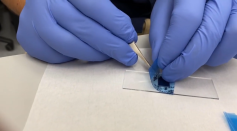PHYSICS & MATH
New Study Finds at Least 45 Planets With Qualities Similar to Earth

Physicists Develop Nano-Sized SQUID Capable of Detecting Extremely Faint Magnetic Fields

10 Free Online Educational Databases Every Student Should Know & Use

Ascension: How Did David Blaine Fly Over Arizona Desert While Holding on To Helium Balloons?
The Unusual Physics of an Upside-Down Boat Flips Previous Understandings of the Law of Buoyancy

The Story of the World's Fastest Human Calculator and His Fractured Skull
Kite Aerodynamics: How Did a Kite Lift a 3-Year-Old?
10% of US Students are English Learners

3 Statistical Facts That Seem Outrageous at First
Scientists Build A Mechanical Switch With Origami

Constructor Theory Could Explain Life, Universe, and Existence

Dr. Katie Mack Presents Five Possible End Scenarios for the Universe
Ultraclean Graphene As High Performance Magnetic Field Sensors

Ultrathin Silicon Nanoantennas Can Slow Down and Redirect Light
Most Popular

How Strong Are Tornadoes? Understanding the EF Scale and the Extreme Power Tornadoes

Glaciers Are Melting Fast: Climate Change Impact Driving Sea-Level Rise Worldwide

How Telescopes Work: Optical vs Radio vs Space Telescope Science Explained

Can the World Run Out of Water? Water Scarcity Science and Climate Impact Explained




